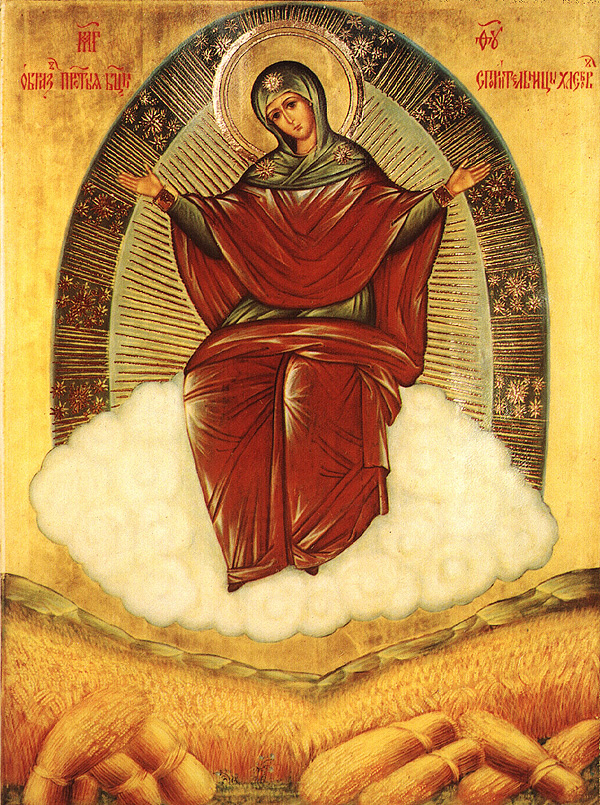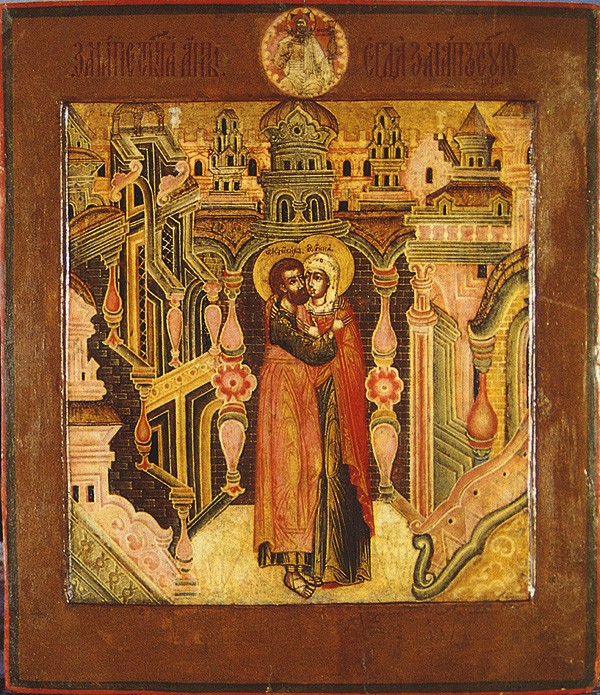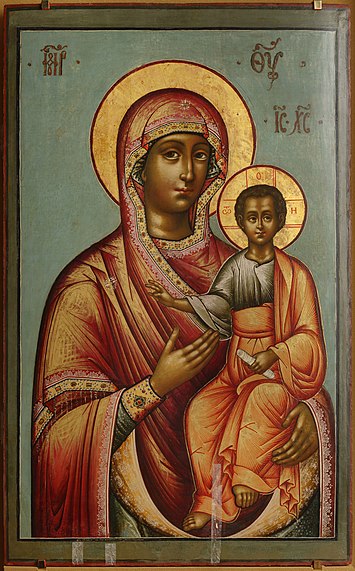
The
Icon
of the Mother of God, the "Multiplier of Wheat", was painted at the
blessing of the Elder Ambrose (October 10) of the Visitation Optina
wilderness monastery. St Ambrose, a great Russian ascetic of the
nineteenth century, was ardent with a childlike faith towards the Mother
of God. In particular, he revered all the Feastdays of the Mother of
God, and on these days he redoubled his prayer. With the icon,
"Multiplier of Wheat," St Ambrose blessed the Shamordino women's
monastery established in honor of the Kazan Icon of the Mother of God,
which he had founded not far from the Optina monastery.
http://oca.org/saints/lives/2013/10/15/102979-icon-of-the-mother-of-god-the-ldquomultiplier-of-wheatrdquo

On
this icon, the Mother of God is depicted sitting upon the clouds, and
Her hands are extended in blessing. Beneath her is a compressed
field, and on it amidst the grass and flowers stand and lay sheaves of
rye. Elder Ambrose himself decreed the day of celebration, October 15,
and called the icon "Multiplier of Wheat", indicating by this, that the
Most Holy Theotokos "is a Helper for people in their labors for the
acquiring of their daily bread."
Before his blessed repose, St
Ambrose ordered many copies of this icon and sent them to his spiritual
children. For the Akathist to this icon, the Elder composed a particular
response, "Hail, Full of Grace, the Lord is with You! Grant unto us
unworthy ones the dew of Your grace and the showing forth of Your
mercy!"
St Ambrose's burial took place on October 15, the
Feastday of the icon. The first miracle from the holy icon was witnessed
in 1891, when throughout Russia there was a famine because of crop
failure. In the Kaluga district and on the fields of the Shamordino
monastery, however, grain was produced. In 1892,
already after the death of St Ambrose, his attendant John Cherepanov
sent a copy of the icon to the Pyatnitsa women's monastery in Voronezh
district. In this locale there was a threat of drought and famine, but
soon after a Molieben was celebrated before the icon "The Multiplier of
Wheat", rain fell and ended the drought.
http://www.johnsanidopoulos.com/2009/10/icon-of-mother-of-god-multiplier-of.html
https://doxologia.ro/cinstirea-icoanei-maicii-domnului-sporitoarea-granelor
L'icona
della Madre del Dio, del molto grano è stata dipinta e benedetta
dal Santo Starez Ambrogio, Gheron (memoria il 10 ottobre) del monastero
di Optina, Con questa icona ,San Ambrogio ha benedetto il monastero
femminile di Shamordino dedicato all'icona della Santa madre di Dio di
Kazan , che aveva fondato non lontano dal monastero di Optina..
L icona dal molto grano
rappresenta la Madre di Dio seduta sulle nubi,come in un trono e le
braccia estese in segno di benedizione e protezione . Sotto lei è un
campo di grano con dei covoni accatastati . Lo stesso Gheron Ambrogio
ha decretato il giorno della celebrazione, il 15 ottobre ed ha
denominato l'icona del molto grano In quanto la madre di Dio
assiste ed aiuta il suo popolo nei lavori dei campi e nella raccolta del grano.
Ambrogio
morì il 15 ottobre, sinassi dell'icona. Il primo miracolo della santa
icona è
stato testimoniato in 1891, quando in Russia imperversava una terribile
carestia. Nel distretto di Kaluga e sui campi del monastero di
Shamordino, tuttavia, il grano fu raccolto, grazie all intercessione
della Madre di Dio. In 1892, già dopo la morte dello Starez Ambrogio ,
il suo aiutante Giovanni Cherepanov inviò una copia dell'icona al
monastero femminile di Pyatnitsa nel distretto di Voronezh.. Questa
regione era minacciata della siccità che durava da mesi e della
carestia, ma dopo che un Molieben fu celebrato davanti alla santa
icona del tanto grano la pioggia incominciò a cadere e la carestia fu
scongiurata
L'icône de la Mère de Dieu "LA MOISSONNEUSE" ("SPORITIEL' NITSA KHLIEBOV") du monastère d'Optina (Russie XIXème siècle).

Cinstirea Icoanei Maicii Domnului „Pantanassa” - izbăvitoarea de cancer
Această icoană făcătoare de minuni a Născătoarei de Dumnezeu este o
icoană pe lemn, portabilă, zugrăvită în secolul al XVII-lea, şi a fost
adusă de la Nea Skiti de către obştea lui Gheronda Iosif Vatopedinul la
Mănăstirea Vatoped.



















